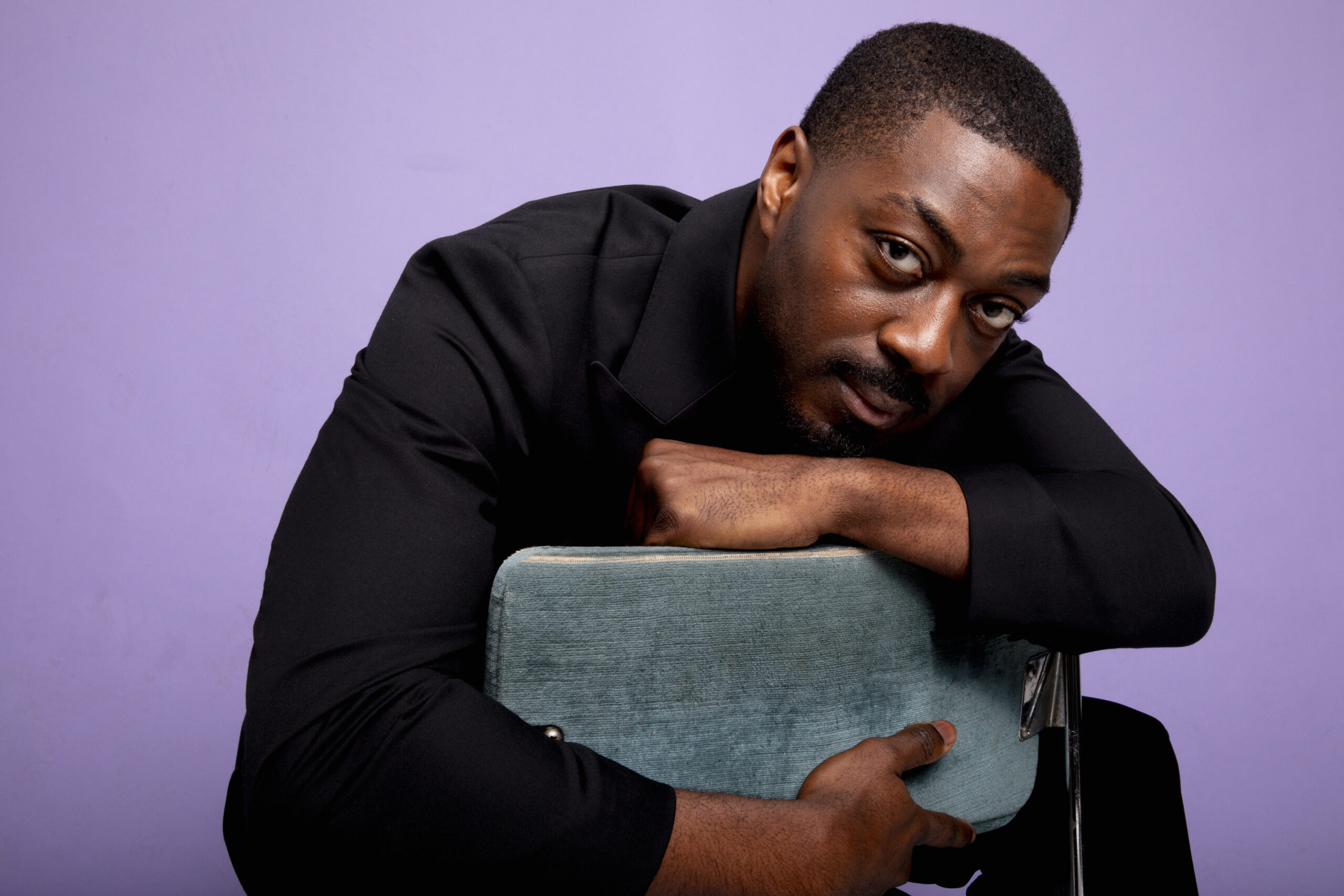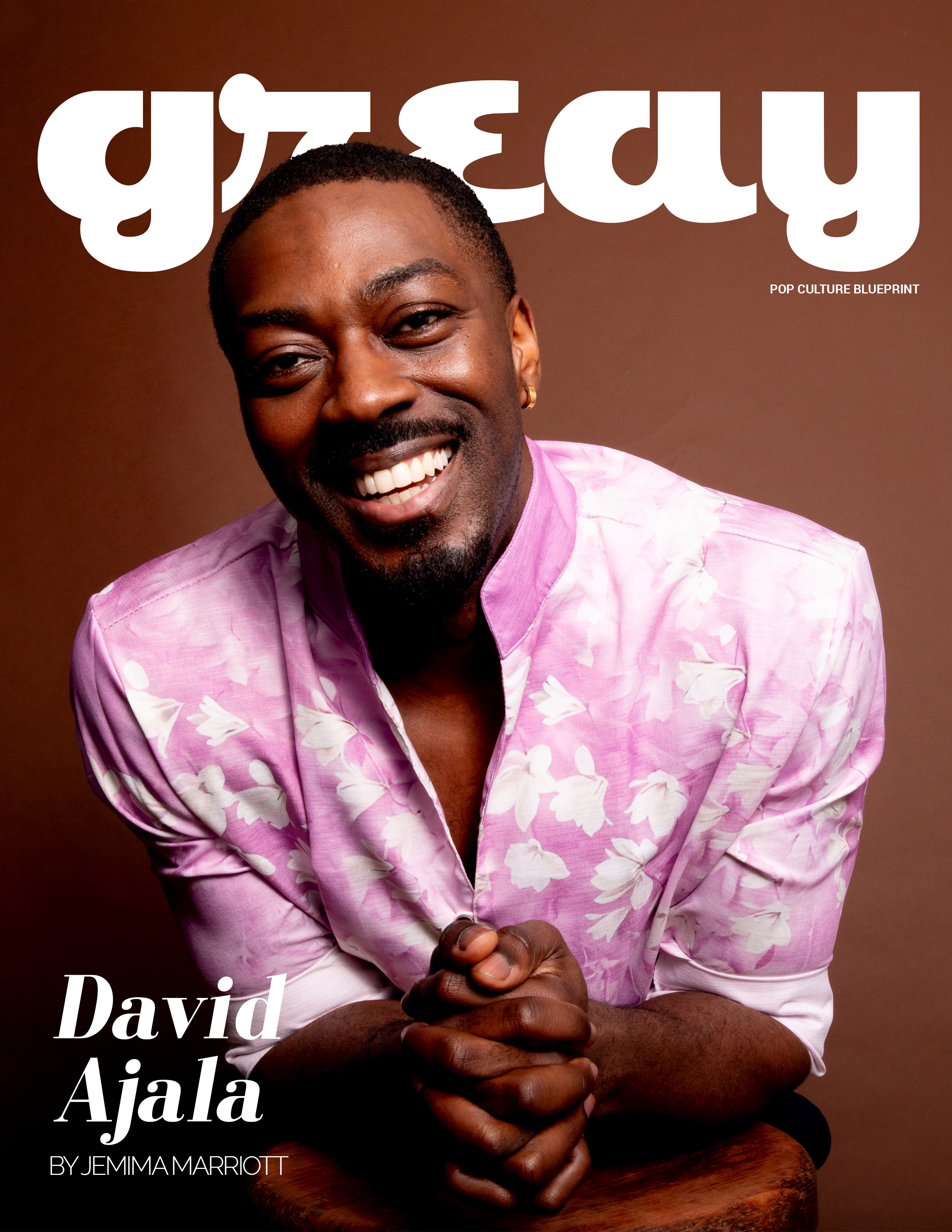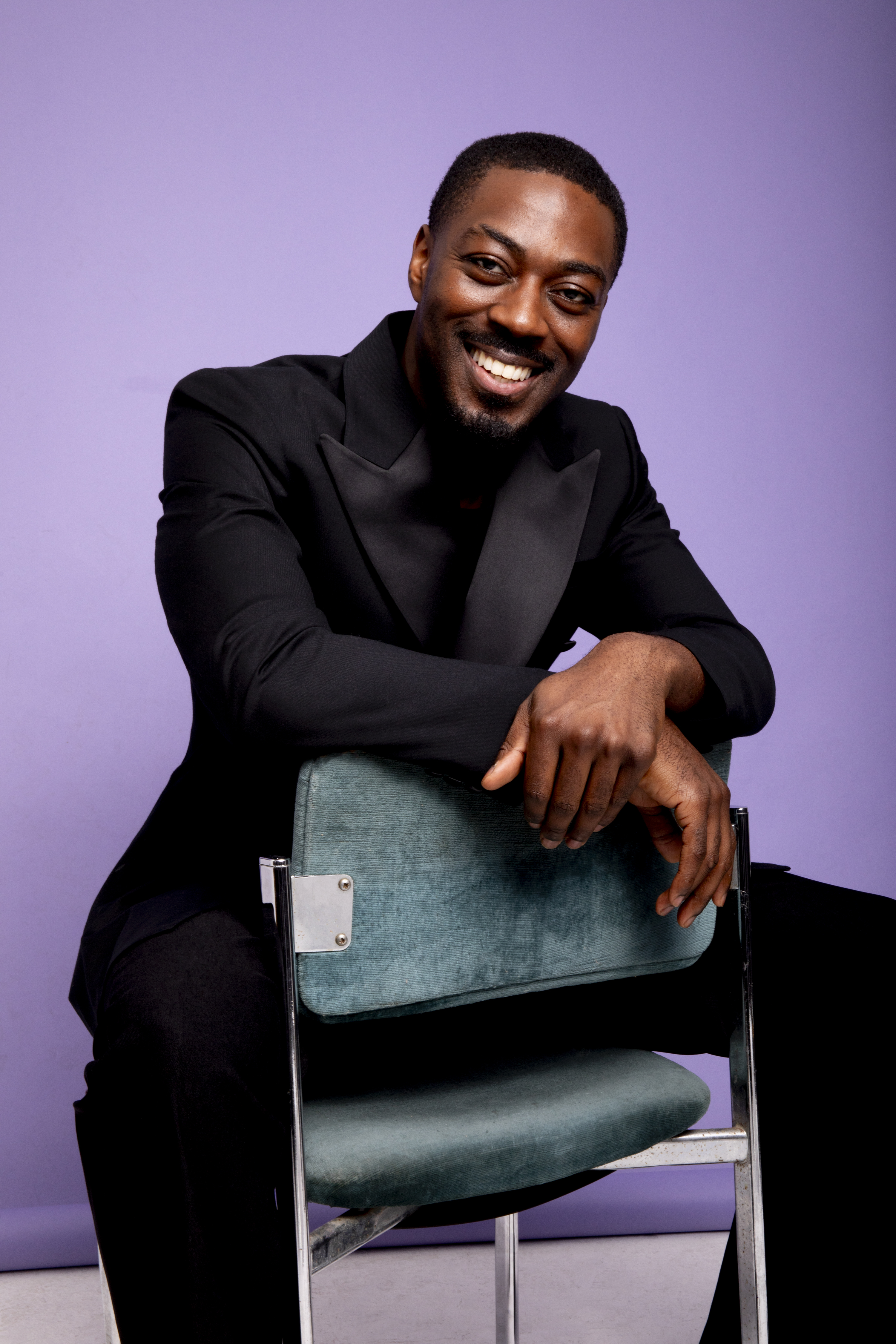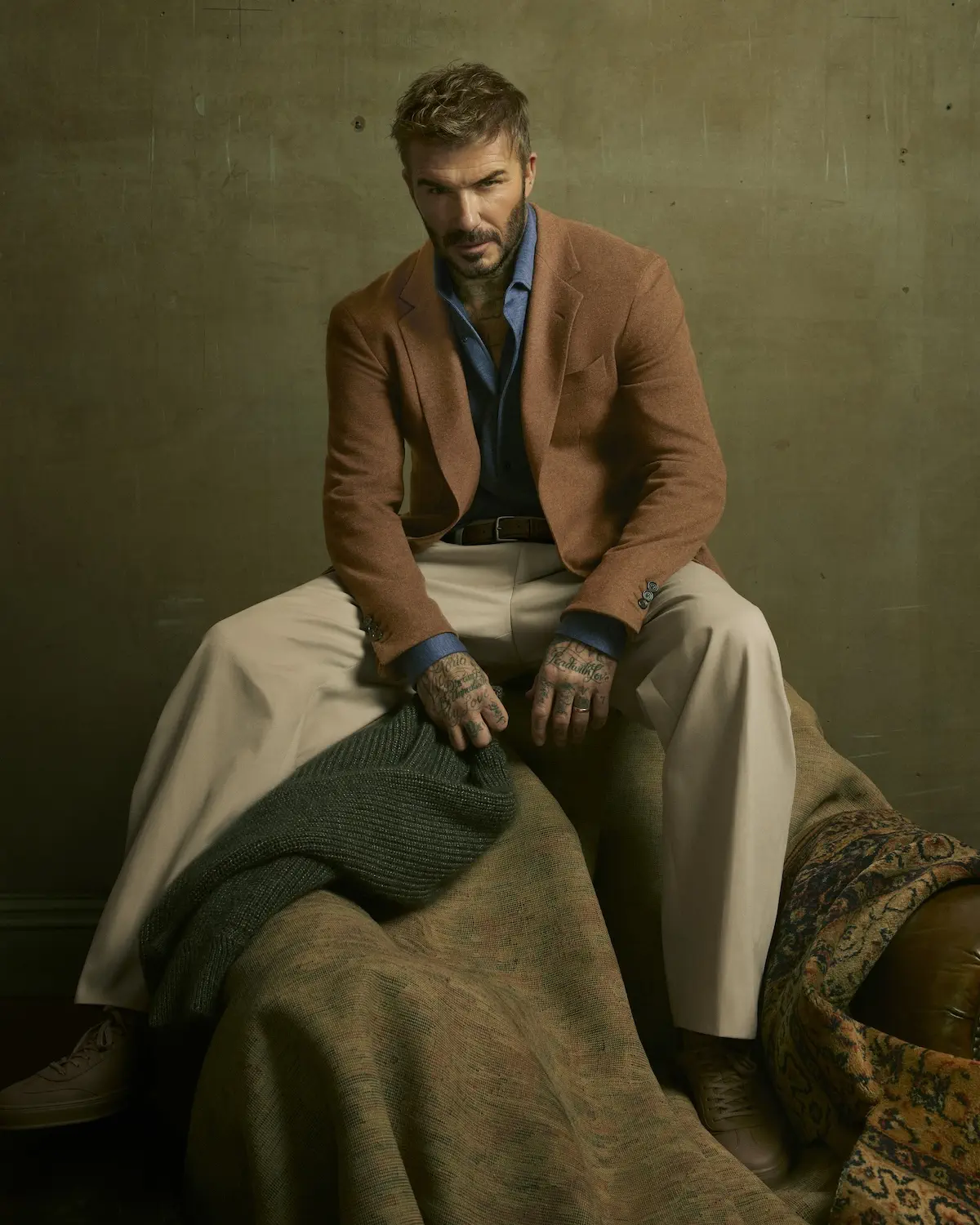
The Humanity of Performance: David Ajala on Storytelling as Survival

David Ajala has built a career defined by versatility and fearless exploration, moving seamlessly from Shakespeare’s stage to blockbuster franchises and psychological thrillers. Fresh off his West End run in My Master Builder alongside Ewan McGregor and Elizabeth Debicki, and ahead of the Netflix premiere of The Woman in Cabin 10 with Keira Knightley, Ajala continues to redefine what it means to be a multifaceted actor. Soon, he will join the cast of Law & Order as a series regular, adding another chapter to a portfolio that already spans Star Trek: Discovery, Supergirl, and One Night in Miami. Whether inhabiting the empathy of Cleveland “Book” Booker or the charisma of Manchester Black, Ajala thrives in the dualities of strength and fragility, rebellion and vulnerability—always seeking the raw human truth at the center of every role.
You’ve recently starred in My Master Builder opposite Ewan McGregor and Elizabeth Debicki on the West End. What drew you to that play, and what did the rehearsal process teach you about yourself as a performer?
What drew me to My Master Builder was its ambiguity and danger. On the page, it’s a play about creation and destruction, but in rehearsal it became a play about desire, fear, and the masks we wear. Working opposite Ewan and Elizabeth, under Michael Grandage’s direction, I had to constantly adapt. There was no room for settling into a single “answer.” The process taught me to lean into uncertainty. I realised I thrive when I stop trying to control every beat and instead trust the tension, the mess, and the humanity of the moment.
From the Royal Shakespeare Company to Star Trek: Discovery, your career has spanned stage, television, and film. How do you mentally prepare for the shift between the immediacy of live theatre and the layered precision of screen acting?
For me, it’s about recalibrating energy. On stage, you’re sending a current across a whole auditorium. On screen, the camera does the magnifying for you, so it’s about stripping back and trusting the smallest flicker of thought will read. The preparation is the same: truth, text, physical grounding. The dial simply shifts. Theatre keeps my instincts sharp, while screen work hones my discipline in detail. They feed each other beautifully.
In Discovery, Cleveland “Book” Booker is equal parts rebel, empath, and survivor. Looking back, what evolution in Book’s journey resonated with you most personally?
Book’s grief and resilience resonated most with me. He loses everything, his planet and his family, and still chooses connection, still chooses hope. Playing those beats forced me to ask myself: when stripped of all the external trappings, who am I? What do I hold on to? That journey of loss and renewal mirrored things I’ve lived through personally, and it deepened my respect for Book’s quiet strength.
You’ve spoken about accidentally becoming a Star Trek fan through others, like Sir Patrick Stewart. Now that you’ve been part of the universe, how has your relationship to the franchise and its legacy changed?
It’s changed profoundly. At first, Star Trek was a distant cultural giant I admired from afar. Now, I’ve felt the heartbeat of the fandom, the way people carry these stories as part of their lives. It’s not just entertainment. It’s philosophy, it’s identity, it’s community. Being inside the legacy, I’ve learned that it is about hope. That’s why it endures, because it insists on imagining a better future.
The Jetty and Nine Bodies in a Mexican Morgue both lean into psychological drama and suspense. What excites you about stepping into darker, morally complex spaces as a performer?
Darkness reveals humanity. When characters are pressed to their limits, when morality is tested, that is where the truth leaks out. Those projects allow me to explore not just who people are, but who they pretend to be, and what happens when the mask slips. As an actor, that is thrilling, because the audience leans in when they sense danger.
Many fans first encountered you as Manchester Black in Supergirl. What did that role allow you to explore about charisma, rebellion, and power on screen?
Manchester Black was an explosion of charm and menace. His rebellion came from pain. He wasn’t a villain twirling a moustache; he was a man wounded by love and injustice. The role let me explore how charisma can be weaponised, how a smile can disarm just before the knife goes in. It reminded me how close rebellion and righteousness can sit.

Your film credits range from The Dark Knight to Jupiter Ascending and Starred Up. Is there a film role you feel audiences might have overlooked but that remains deeply meaningful to you?
Starred Up. It’s raw, it’s British, and it captured something brutally honest about violence, masculinity, and survival. I had a small role, but the environment of that set, the danger in every corner, taught me volumes. Sometimes it’s not the size of the role; it’s the depth of the lesson. That film holds a special place for me.
You’ve voiced and been modeled as Sean “Mac” McAlister in Need for Speed: Payback. How different is the creative process for video games compared to stage or screen, and do you see gaming as an expanding frontier for actors?
It’s completely different and yet strangely familiar. You’re in a motion-capture suit, surrounded by cameras, with nothing but imagination to build the world. In that way, it’s closer to theatre: you’re conjuring with your body and voice. Gaming is absolutely a frontier. These stories are becoming as cinematic and emotionally layered as film or TV, and actors get to help shape worlds that millions of people inhabit interactively. That is exciting.
You’ve portrayed Jim Brown in One Night in Miami. What was the responsibility like in channeling such a towering real-life figure for a European audience?
Immense. Jim Brown isn’t just an athlete or actor; he’s a cultural force. Playing him meant carrying not just his charisma, but his contradictions. For a European audience less familiar with his legacy, I felt a responsibility to honour the weight of his presence while revealing the man underneath. It was about capturing his stillness and authority, but also his vulnerability in private moments.
As an actor of Yoruba origin growing up in Hackney, how has your cultural background shaped the stories you feel drawn to tell?
It has given me dual vision. Yoruba tradition teaches respect for ancestors and the idea that storytelling is a sacred act. Growing up in Hackney gave me grit, humour, and resilience. Together, they draw me to stories about survival and transformation, about people who fight for dignity and wrestle with identity. I want to honour both the poetry of where I come from and the rawness of where I grew up.
Across so many genres, from sci-fi to drama, superhero to crime thrillers, what throughline connects the characters you choose to inhabit?
For me, it is duality. I’m fascinated by characters who are both strong and fragile, powerful and broken, loved and feared. Whether it’s a rebel, a builder, or a grieving empath, I’m drawn to the spaces in between, the contradictions that make someone human.
Looking ahead, what kind of role or project would challenge you in ways you haven’t yet experienced, and what story do you hope to tell next?
I’d love to step into something that strips away everything: no genre scaffolding, no armour. Just a raw, intimate story about love, loss, or identity. A character who terrifies me because there is nothing to hide behind. I am also interested in building stories behind the camera, stories that reflect underrepresented voices, stories that mix danger with humour, and myth with modern life.
You’re about to appear in Netflix’s The Woman in Cabin 10 alongside Keira Knightley. What can you tell us about the atmosphere of this psychological thriller and your role within it?
The atmosphere is suffocating in the best way. You’re trapped on a luxurious yacht where every shadow feels like a threat. My character, Ben Morgan, is caught in that tension between charm and suspicion. You’re never quite sure what side he is on. That uncertainty is what makes the story so gripping. No one is safe, and no one is what they seem.
With the film premiering October 10th, how do you think audiences will respond to its themes of paranoia, isolation, and trust, and what was it like working opposite Keira Knightley in such a charged setting?
I think audiences will see themselves in it, because paranoia and trust aren’t just thriller devices; they are part of how we navigate life. In a world where we are more connected and more suspicious than ever, the story will hit a nerve. Working opposite Keira was electric. She’s precise, generous, and completely committed, which forces you to be alive to every nuance. The charged atmosphere wasn’t just in the script. It was in the room, and I think audiences will feel that.
What makes David Ajala stand out isn’t just his range across genres, but his insistence on leaning into the uncertainty of performance itself. From stage to screen to motion-capture, he approaches each medium as an opportunity to strip away artifice and reveal something essential about humanity. As he prepares to step into the familiar halls of Law & Order while continuing to explore darker, morally complex terrain in his film work, Ajala embodies the rare kind of artist who sees storytelling not just as craft, but as a sacred act of connection. For him, it’s never about control—it’s about surrendering to the tension, the danger, and the possibility of transformation.
Photographer: Jemima Marriott
Words Kyra Green
Styling: Tom O’Dell
Grooming: Sophia Taylor







